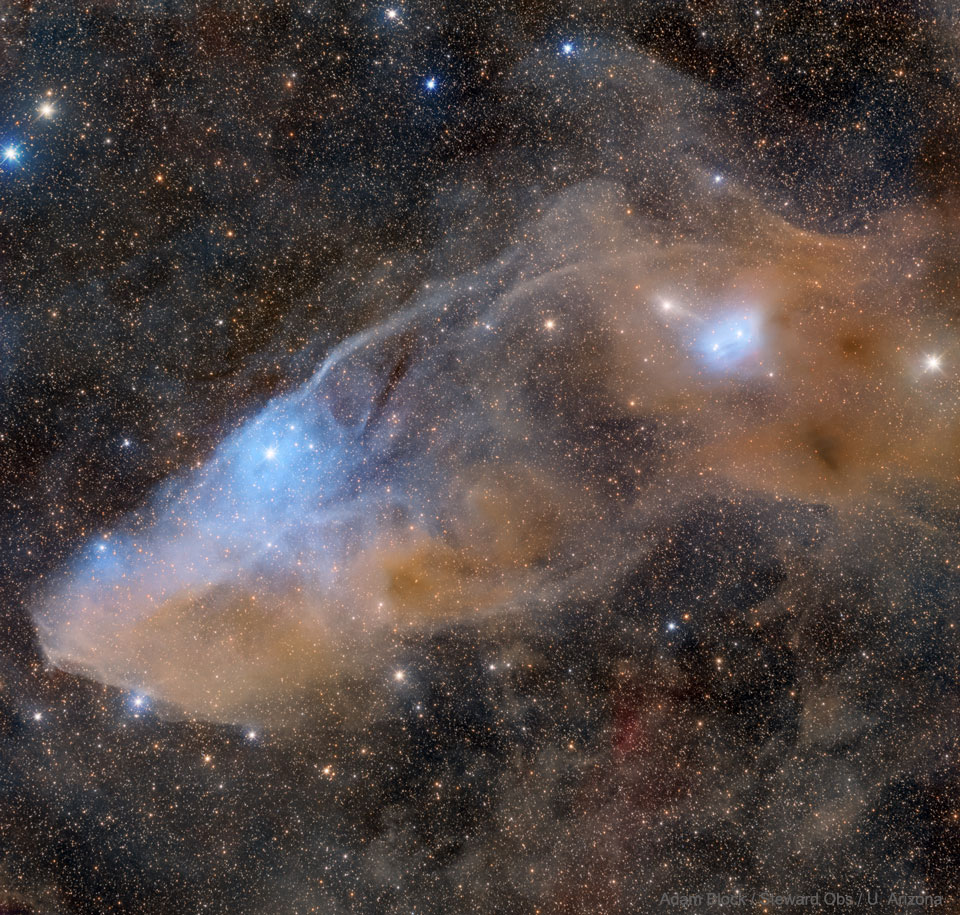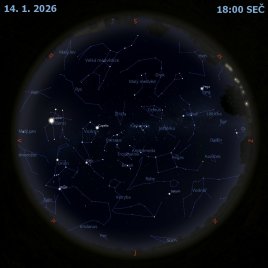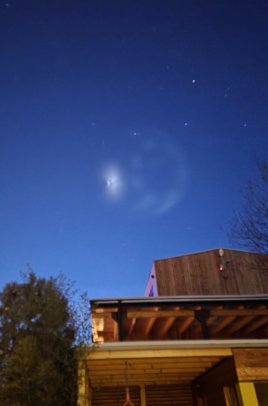IC 4592: Reflexní mlhovina Modrá Koňská hlava

Uznání a copyright: Adam Block, Steward Observatory, University of Arizona
Vidíte koňskou hlavu? To, co vidíte, není slavná mlhovina Koňská hlava v Orionu, ale poněkud slabší mlhovina, která získá dobře známou podobu až při hlubším zobrazení. Hlavní částí zde zobrazeného komplexu molekulárních mračen je reflexní mlhovina katalogizovaná jako IC 4592. Reflexní mlhoviny jsou ve skutečnosti tvořeny velmi jemným prachem, který se normálně jeví jako tmavý, ale při odrazu viditelného světla blízkých energetických hvězd může vypadat docela modře. V tomto případě je zdroj většiny odraženého světla hvězda v oku koně. Tato hvězda je součástí Nu Scorpii, jednoho z jasnějších hvězdných systémů v souhvězdí Štíra (Scorpius). Druhá reflexní mlhovina s označením IC 4601 je vidět v okolí dvou hvězd od středu snímku vpravo.
Seznam odkazů v popisu
- APOD: 2012-10-21 Mlhovina Koňská hlava
- APOD: 2012-09-09 Okolí mlhoviny Koňská hlava
- APOD: 2021-07-04 _dobře_známou_podobu_
- AdamBlockPhotos.com: IC 4592 (NU SCORPII) AND IC 4601
- APOD: 2020-11-22 Tmavé molekulární mračno Barnard 68
- Wikipedia: Reflection_nebula
- Wikipedia: IC_4592
- APOD: 2003-07-06 Fraktální mezihvězdný prach zblízka
- NASA: Visible Light
- Youtube.com: NGC 6543 Cat's Eye Planetary Nebula, zoom into
- Wikipedia: Nu_Scorpii
- Wikipedia: Scorpius
- APOD: Reflection Nebulae
- Berkeley.edu: WISE - Multimedia Gallery: IC 4601
NASA Official: Phillip Newman Specific rights apply. NASA Web Privacy Policy and Important Notices
A service of: ASD at NASA / GSFC & Michigan Tech. U.
Odkaz na originální APOD


